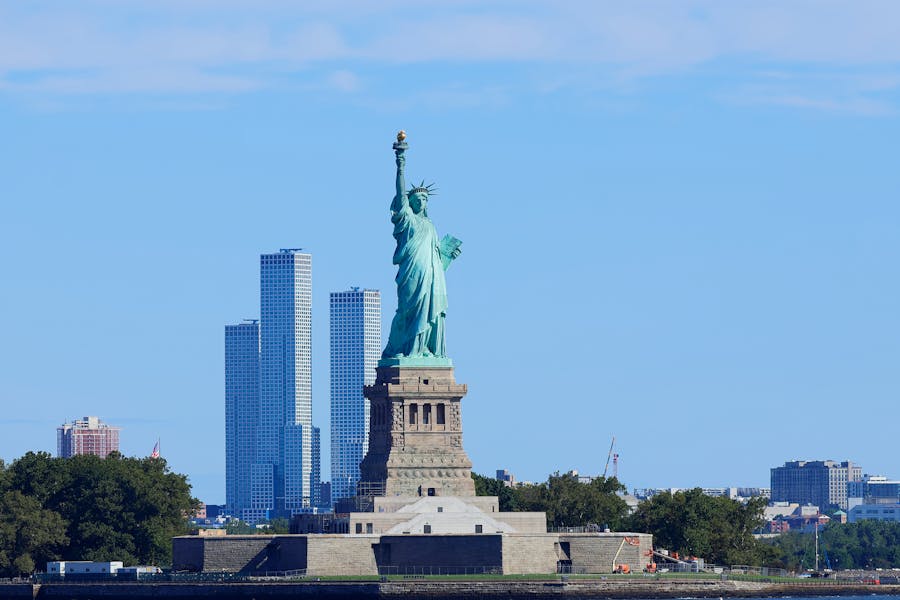National monuments are guardians of a country’s natural beauty, historical significance, and cultural heritage, attracting millions of visitors annually. These sites, designated to preserve the integrity and memory of important landmarks, are not just tourist destinations but are pillars of national pride and historical importance. However, with such a prestigious status comes the responsibility to protect and maintain them, necessitating a set of rules and regulations for all visitors. Understanding what is not allowed in national monuments is crucial for anyone exploring these majestic sites, ensuring their visit contributes to preserving and appreciating these wonders for future generations. This article aims to shed light on the general and specific prohibitions at national monuments, guiding visitors toward a respectful and enriching experience.
What is not allowed in national monuments?
In national monuments, various activities are prohibited to protect their historical, cultural, and natural significance. Generally, you cannot litter, deface property with graffiti, conduct unauthorized commercial activities, disturb wildlife, or remove artifacts. Specific restrictions may also include flying drones, bringing pets in certain areas, camping, making fires, and accessing certain areas with vehicles. The rules can vary significantly depending on the monument’s location and significance, so it’s always best to check the specific guidelines for the monument you plan to visit. Adhering to these rules ensures that these treasured sites remain intact and accessible for future generations to learn from and enjoy.
General Prohibitions In National Monuments
National monuments serve as custodians of a nation’s heritage, embodying its historical, cultural, and natural legacy. To safeguard these invaluable assets for future generations, stringent regulations are in place, prohibiting activities that could harm or degrade their integrity. These general prohibitions, applicable across most national monuments, are essential in maintaining the sanctity and beauty of these sites. Below is a detailed exploration of these prohibitions:
No Littering or Leaving Trash Behind: One of the most fundamental rules across all national monuments is the prohibition of littering. Visitors are urged to adopt a “Leave No Trace” ethic, ensuring they carry out all their trash and belongings. This rule is critical in preserving these areas’ natural beauty and cleanliness, preventing pollution and the harm it can cause to wildlife and the environment.
No Graffiti or Defacement: Defacing national monuments with graffiti, carvings, or other vandalism is strictly prohibited. Such actions mar the aesthetic and historical value of these sites and can lead to irreversible damage. Restoration efforts can be costly and time-consuming, and in some cases, the original state cannot be fully recovered. The prohibition of defacement underscores the respect and reverence owed to these heritage symbols.
Commercial Activities: Unauthorized commercial activities, including selling goods or services, are permitted within national monuments with proper authorization. This rule is designed to prevent the commercial exploitation of these sites, ensuring that their primary role as places of reflection, education, and natural beauty is preserved. It also helps in controlling crowds and minimizing the impact on the environment.
Disturbing Wildlife: Many national monuments are also important wildlife habitats. As such, disturbing, feeding, or attempting to interact with wildlife is prohibited. These rules protect the natural behaviors and habitats of wildlife, ensuring the ecosystem remains balanced and undisturbed. Visitors are encouraged to observe wildlife from a distance, minimizing human impact on their natural routines.
Removal of Artifacts and Natural Objects: The removal of artifacts, rocks, plants, or any other objects from national monuments is illegal. These items are considered part of the site’s cultural and natural heritage and are protected by law. Removing these objects not only constitutes theft but also deprives others of the opportunity to learn from and enjoy these resources. The rule underscores the importance of preserving history and natural beauty in situ for educational and research purposes.
Unauthorized Activities: Specific activities may be prohibited based on a monument’s unique environmental, cultural, or historical sensitivities. These can include restrictions on camping, making fires, flying drones, or engaging in certain recreational activities. Such restrictions are often in place to protect the monument’s resources and ensure the safety and enjoyment of all visitors. For instance, fire restrictions help prevent wildfires, while drone restrictions protect the privacy and tranquility of the area and wildlife.
Specific Restrictions And Activities Not Allowed
In addition to the general prohibitions that apply to all national monuments, there are specific restrictions and activities not allowed that are tailored to protect the unique aspects and sensitivities of each site. The monument’s unique environmental conditions, cultural significance, or historical context often determine these specific rules. Understanding these restrictions is crucial for visitors to ensure they are not inadvertently causing harm or disrespecting the site. Below are some examples of specific restrictions and activities not allowed in various national monuments:
Drone Flying and Aerial Photography Restrictions:
Many national monuments restrict the use of drones and other remote-controlled aerial devices. These restrictions are in place to protect wildlife, preserve the peace and tranquility of the area, and prevent potential damage to sensitive archaeological sites. Drones can also pose privacy concerns for other visitors. Always check the monument’s specific aerial photography and drone use rules before your visit.
Pet Restrictions:
While some national monuments may allow pets in designated areas, there are often strict rules about where pets can go. These restrictions are designed to protect wildlife, the natural environment, and the pet itself. Pets may need to be kept on a leash at all times, and some areas may be entirely off-limits for pets to protect sensitive habitats or because of safety concerns.
Camping and Fire-Making Limitations:
Not all national monuments permit camping, and those that do often have designated areas for this activity to minimize environmental impact. Fire-making is typically restricted or entirely prohibited, especially in areas prone to wildfires. These rules help prevent forest fires and protect the natural landscape from damage. Before planning an overnight stay, visitors should always verify camping regulations and fire-making rules.
Vehicular Access and Parking Restrictions:
Many national monuments limit vehicular access to reduce environmental impact and preserve the integrity of historical and natural sites. There may be designated parking areas, and some parts of the monument might only be accessible on foot or by shuttle service. These restrictions help manage traffic, reduce pollution, and ensure that the natural and historical features of the site are not compromised.
Limitations on Group Sizes and Noise Levels:
To protect the peace and natural ambiance of national monuments, there may be limitations on the size of visiting groups and regulations regarding noise levels. Large groups can cause a more significant environmental impact and detract from the experience of other visitors. Noise restrictions help maintain the natural soundscape, allowing all visitors to enjoy the tranquility of the site.
Prohibitions on Collecting Natural or Cultural Artifacts:
Aside from the general ban on removing artifacts, specific national monuments may have stringent rules against collecting natural items such as rocks, plants, or shells. These rules protect the ecosystem and ensure that cultural artifacts remain in their context for educational and preservation purposes.
Tips for Visitors
Visiting national monuments can be a profoundly enriching experience, offering insights into a country’s natural wonders, cultural heritage, and historical depth. To ensure that your visit is enjoyable, respectful, and in harmony with the preservation efforts of these sites, consider the following tips:
- Research Before You Go: Before visiting a national monument, take some time to research the specific site you plan to visit. Look up any specific restrictions, required permits, hours of operation, and recommended items to bring. Understanding the site’s significance and rules will enhance your appreciation and help you adequately prepare.
- Respect Posted Signs and Guidelines: Pay close attention to all posted signs and guidelines at the monument. These are in place to protect both the monument and its visitors. Whether it’s a sign indicating a fragile ecological area or a request to stay on marked trails, following these guidelines is crucial for conservation and safety.
- Leave No Trace: Embrace the Leave No Trace principles by packing out all trash, staying on designated paths to avoid damaging vegetation or causing erosion, and leaving natural and cultural objects as you find them. This approach ensures that the monument remains pristine for future visitors and that its ecological and historical integrity is preserved.
- Use Established Facilities: Utilize established facilities for parking, picnicking, and restroom needs. These facilities are designed to minimize environmental impact and ensure visitors enjoy the monument without detracting from its natural and historical value.
- Minimize Noise: Keep noise levels to a minimum to preserve the natural ambiance of the site and allow all visitors, including wildlife, to enjoy the monument in peace. Avoid playing loud music or engaging in noisy activities, especially in areas known for their tranquility and natural soundscape.
- Stay Safe: Follow all safety guidelines and recommendations provided by the monument staff. This includes staying within designated areas, using appropriate safety gear when necessary, and being mindful of weather conditions and terrain challenges. National monuments can encompass rugged, remote, or potentially hazardous areas, so personal safety should always be a priority.
- Support Conservation Efforts: Consider supporting the monument through donations, volunteering, or participating in educational programs. Many national monuments rely on the support of visitors and volunteers for conservation and maintenance efforts. Engaging with the monument meaningfully can enhance your experience and contribute to its ongoing preservation.
- Be Patient and Courteous: Finally, be patient and courteous to staff and other visitors. National monuments can attract large crowds, especially during peak seasons. Showing respect and understanding in interactions with others contributes to a positive experience for everyone involved.
Bottom line
Visiting national monuments offers a unique opportunity to connect with a country’s heritage, nature, and history. By approaching these visits with respect, awareness, and responsibility, we can ensure that these treasures are preserved and appreciated. The bottom line for any visitor is to leave the monument as you found it, if not better, by adhering to established guidelines, respecting the site’s natural and cultural integrity, and contributing positively to conservation efforts. This approach ensures that national monuments remain vibrant, educational, and inspiring for future generations, continuing to serve as symbols of natural beauty and historical significance.
FAQ’s
Q: How can I stay safe while visiting a national monument?
A: Always stay on designated paths, follow posted signs, and prepare for weather conditions. Ensure you have adequate water, food, and appropriate clothing. Inform someone of your visit plans, especially if venturing into remote areas.
Q: Are national monuments accessible to people with disabilities?
A: Many national monuments strive to be accessible to everyone, offering features like accessible trails and visitor centers. Check the specific monument’s amenities and services for visitors with disabilities before your visit.
Q: Can I volunteer at a national monument?
A: Yes, many national monuments welcome volunteers. Opportunities vary from conservation projects to educational programs. Contact the monument directly or visit their website for information on how to get involved.










